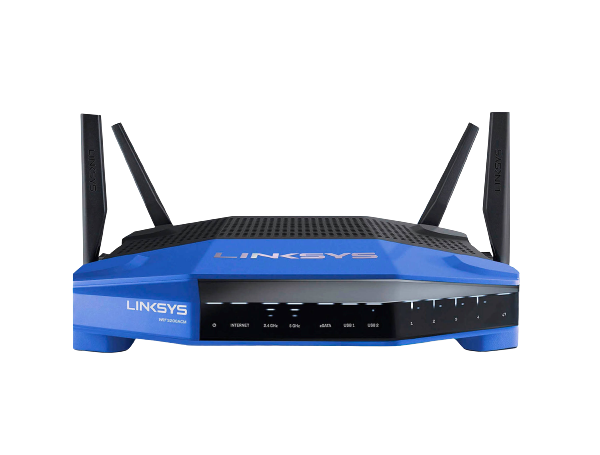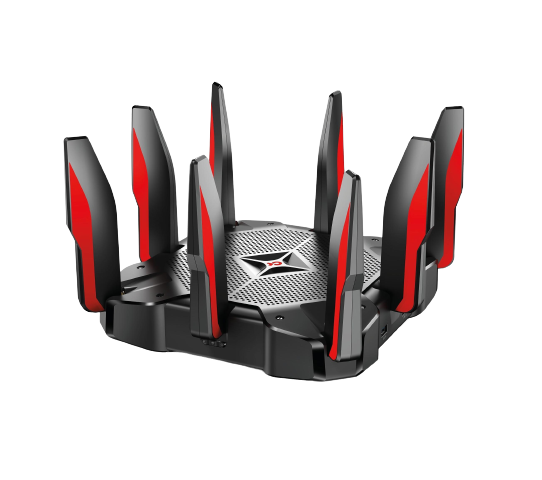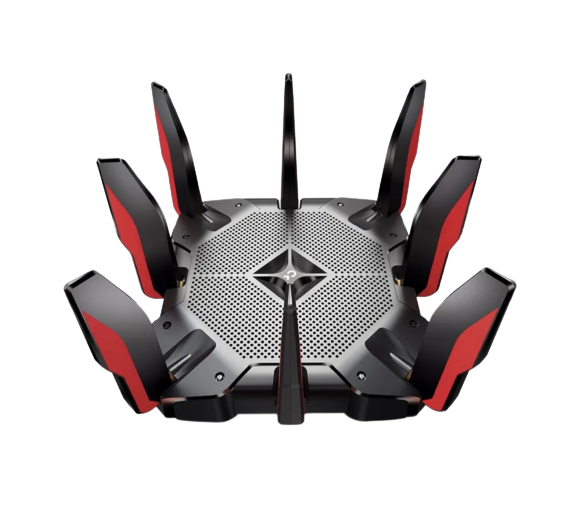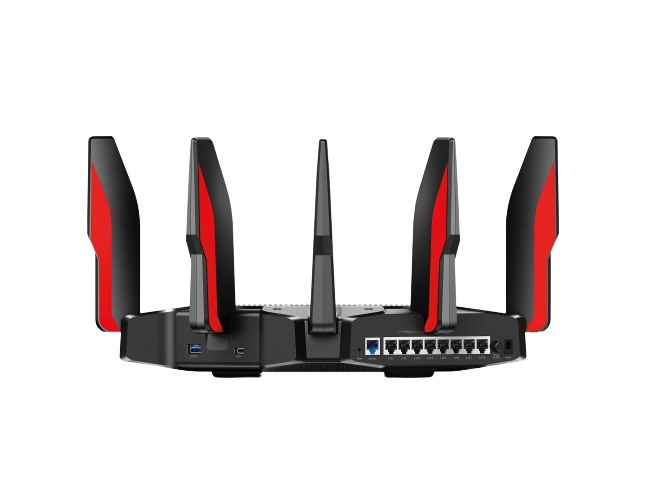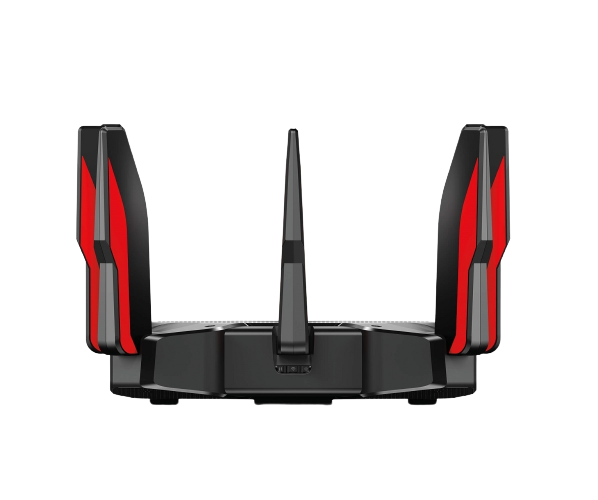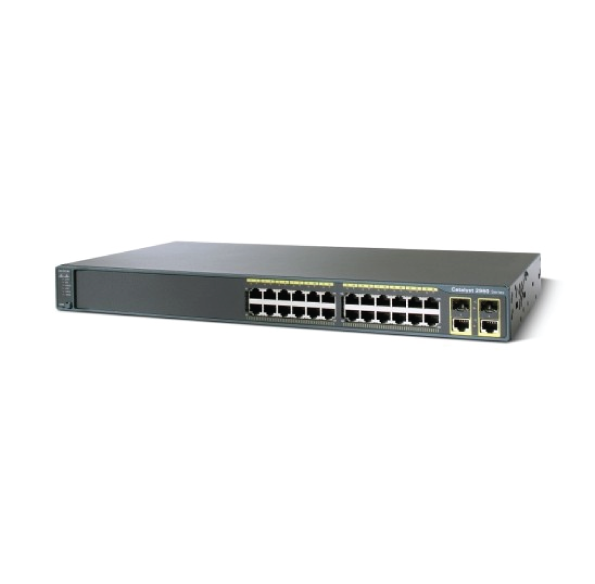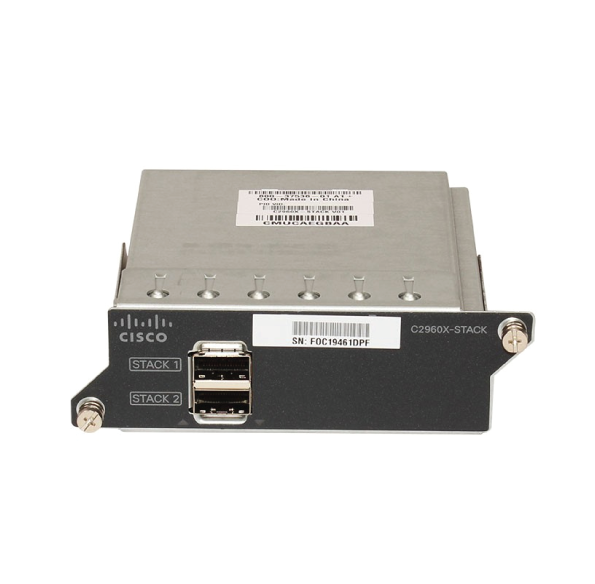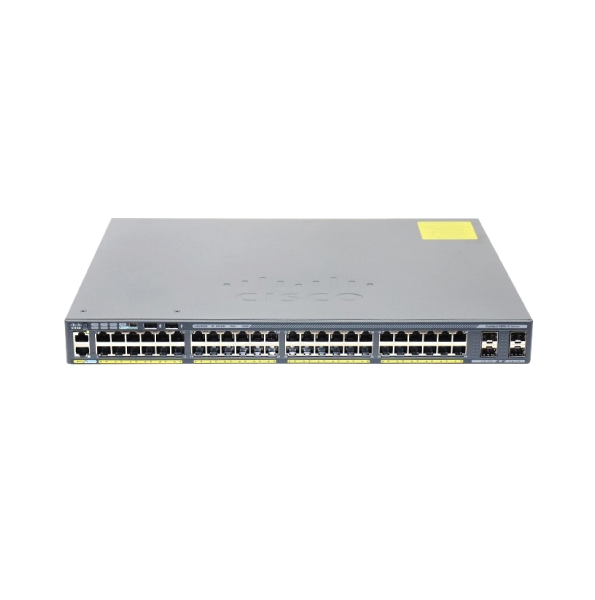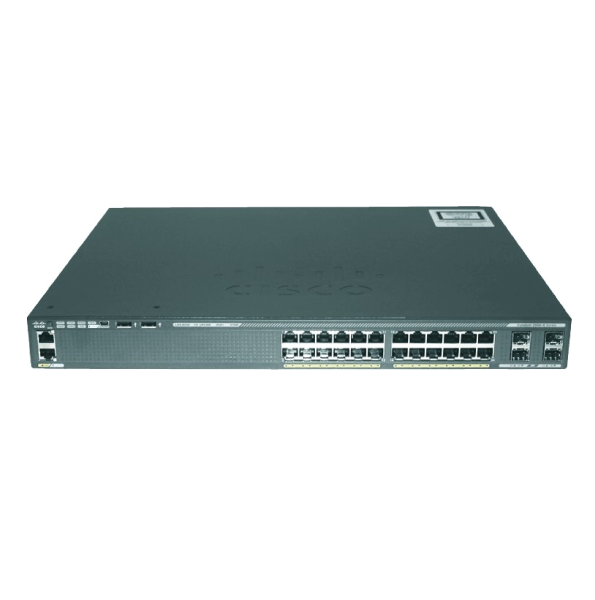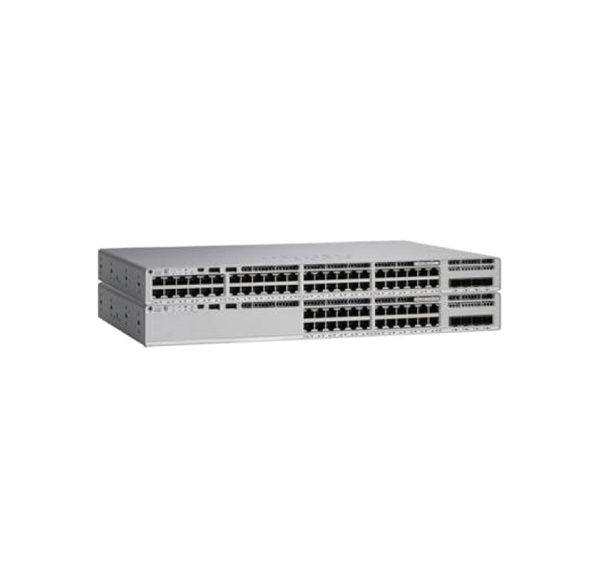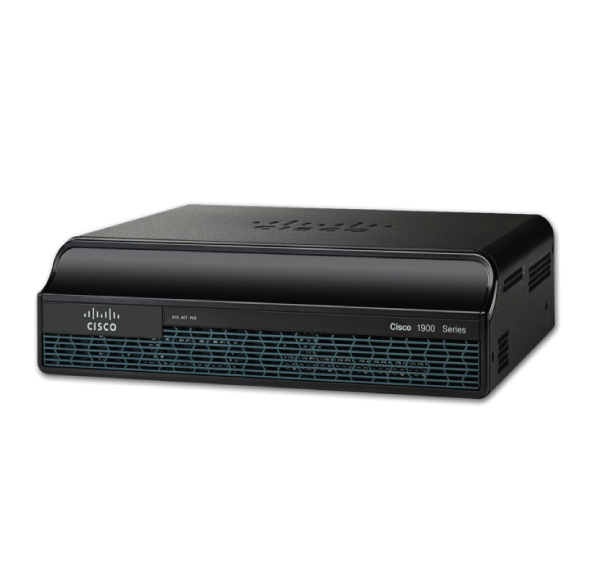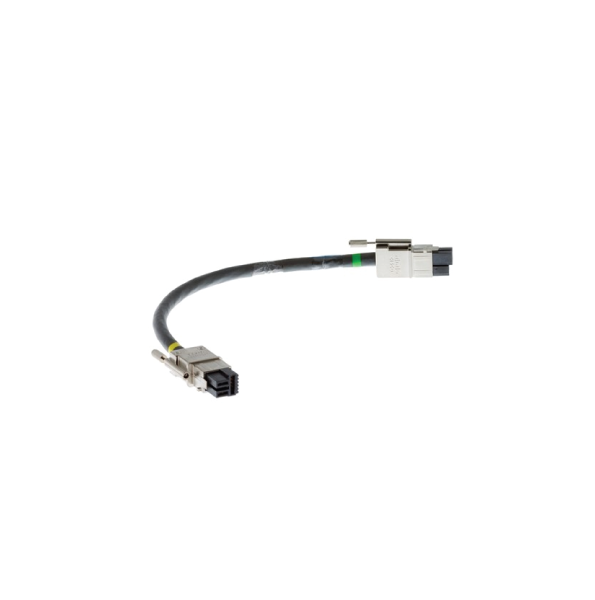TP-LINK ARCHER AX11000
With its black textured cabinet and red accented antennas, the AX11000 has gaming router written all over it. At 7.2 by 11.3 by 11.3 inches (HWD) it’s bigger than the Asus RT-AC5300 gaming router (2.6 by 9.6 by 9.6 inches) and will require a good chuck of dedicated desktop real estate. It sports eight removable non-adjustable high performance antennas and an LED indicator that glows solid white when everything is working properly, glows solid red when the router loses Internet connectivity, and glows solid orange when Wi-Fi is disabled. Overall, it’s a neat look, but if there’s anything negative to say about this wireless router is that it’s going to take up significant real estate wherever you put it. The AX11000 can be controlled using TP-Link’s Tether mobile app or with the web-based console, but the web console offers more control than the mobile app and includes a Game Center dashboard. The console opens to a Home screen with buttons along the top labeled Network Map, Game Center, Internet, Wireless, and Advanced. There’s also a network map that shows you how many clients are connected, and below the map is a panel that displays your Internet details (IP and MAC addresses, connection type) and another panel with SpeedTest gauges that show your Internet upload and download speeds.The Game Center button takes you to a dashboard that is loaded with tools to help you keep your network humming. It has a Network Traffic panel that displays real-time upload and download activity, a Performance panel that displays real-time CPU and memory usage, and a USB panel that shows you the status of connected drives. Below these three panels is a larger Device Priority panel with the names of all connected devices and their real-time data rates. Use this panel to give a device bandwidth priority with the click of a button. On the left side of the screen is a menu that includes tabs for Game Accelerator, Game Protector, Smart Game Assistant, and Game Diagnostics. The Game Accelerator option lets you reduce latency and boost overall game speed for whatever client you select, and the Game Protector option is where you go to configure TP-Link’s HomeCare anti-malware and parental controls. These are the same Trend Micro powered controls that come with TP-Link’s Archer AX6000 router and offer age-specific website filters and lifetime protection against viruses, phishing attacks, ransomware, and other malicious content. Use the Game Diagnostics option to run Ping and Traceroute tests to help identify network problems. Other settings include VPN Server and Port Forwarding settings. The rear panel is home to a bevy of I/O ports. Here you’ll find eight gigabit LAN ports, a 2.5Gb WAN port, a reset button, a power jack, and a power switch. The right side of the router holds a Type A USB 3.0 port and a Type C USB 3.0 port. Under the hood are a 1.8GHz quad-core processor, 1 gigabyte (GB) of RAM, and 512 megabytes (MB) of flash memory. The AX11000 is a 12 stream tri-band router that is capable of reaching (theoretical) data rates of up to 1,148 megabits per second (Mbps) on the 2.4 GHz band and up to 4,804 Mbps on each of the two 5 GHz bands. It employs the latest 802.11ax Wi-Fi 6 technology, including OFDMA (Orthogonal Frequency-Division Multiple Access ),1024 QAM (Quadrature Amplitude Modulation), Target Wake Time, WPA3 encryption, 4X4 MU-MIMO data streaming, beamforming, DFS (Dynamic Frequency Selection), and support for 160MHz channel bandwidth. The Internet button takes you to a screen where you can configure Internet Type and MAC Clone settings, and the Wireless button opens a screen where you can edit SSIDs and passwords, enable/disable OFDMA, enable disable Smart Connect (band steering), and configure guest networking. The Advanced button takes you to a screen where you can tweak advanced wireless and LAN settings and configure things like the firewall, Network Address Translation (NAT) forwarding, and access control. This is also where you can access Administrator settings to view system logs and update the firmware.
Installation and Performance
The TP-Link Archer AX11000 is fairly easy to install using the Tether mobile app or via its web interface. Both methods are quick and painless. We connected the router to our modem and then to our test workstation, powered it up, and typed http://tplinkwifi.net in our web browser’s URL bar. We then created an administrator password, set the time zone, selected Dynamic IP for our connection type, and personalized each band. As a final step, we ran a connection test, upgraded the firmware, created a TP-Link Cloud account, and the installation was complete.The AX11000 earned high marks on our throughput tests. It’s score of 133 Mbps on the 2.4 GHz close proximity (same room) test was faster than the Linksys MR9600 and the Netgear Nighthawk AX12 RAX120 but not quite a speedy as our other Wi-Fi 6 router Editors’ Choice, the Asus RT–AX88U. However, it showed good range performance with a leading score of 67 Mbps on the 30 foot test. Performance on the 5GHz band was also very good. The AX11000’s score of 831 Mbps on the close proximity test was right there with the MR9600 and RAX120 and was 6 percent faster than the RT-AX88U. At 30 feet, the AX11000’s score of 328 Mbps was faster than the MR9600 and the RT-AX88U but couldn’t catch the RAX120, which led with a score of 417 Mbps.


